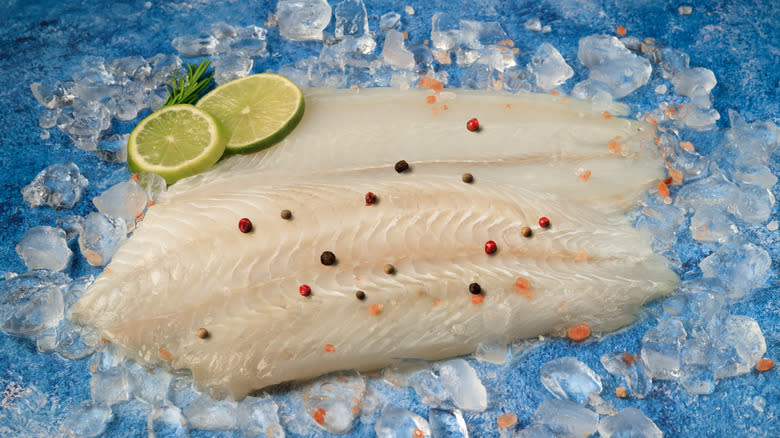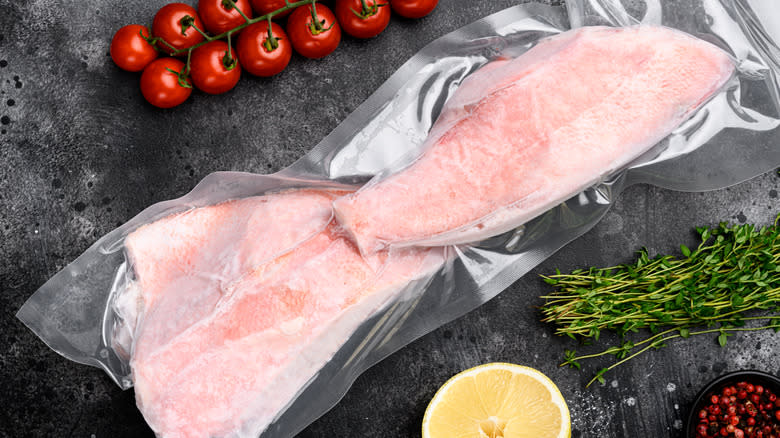The Dangerous Fish Defrosting Mistake You'll Want To Avoid

Fresh fish is certainly always best, but sometimes frozen is easier to find and can be more affordable. A common packaging technique is vacuum-sealed frozen fish because it preserves its quality and freshness — two important components when it comes to cooking and eating seafood. Be warned, however, because one of the major mistakes of defrosting seafood is to defrost your tuna, mahi mahi, salmon, or other favorite fish directly in the vacuum-sealed plastic packaging it comes in.
The main risk in defrosting a dish in vacuum-sealed plastic is botulism — a rare but rather serious condition that is a result of a toxin called Clostridium botulinum. It thrives in places with no oxygen which is why it can be the result of thawing fish in vacuumed-sealed fish. This can be even more of a risk when you remove it from the fridge and it reaches a temperature of around 40 degrees Fahrenheit or higher. Symptoms of food-borne botulism include nausea, vomiting, and paralysis — so let's get into the right way to defrost your vacuum-sealed fish.
Read more: 15 Different Ways To Cook Fish
How To Properly Defrost Vacuum-Sealed Fish

The first step is to safely remove the fish from the vacuum-sealed plastic packaging. Place the fish filets in a reusable plastic bag or glass container or on a plate or glass tray. If all else fails, you can pierce holes or peel open the vacuum-sealed packaging and then place it on a plate. Then it's best to put the fish in a fridge set at 40 degrees Fahrenheit or lower and allow it to defrost overnight. Faster methods include submerging a plastic bag in cold water or using the defrost setting on your microwave.
After the fish is defrosted, time is ticking, because you should cook the defrosted fish within 2 days (unless you've used the microwave method, in which case you should cook your fish immediately. After the fish is cooked, any leftovers should be stored in the fridge for up to four days. Signs of spoiled fish include a sour smell, bruising, grayish color, and a slimy appearance — so use all of your senses before you cook that thawed fish. And just in case you need a fresh way to use the defrosted fish before it goes bad, consider these baked fish recipes including this baked ginger and mint cod that's ready in just 30 minutes.
Read the original article on Tasting Table.


